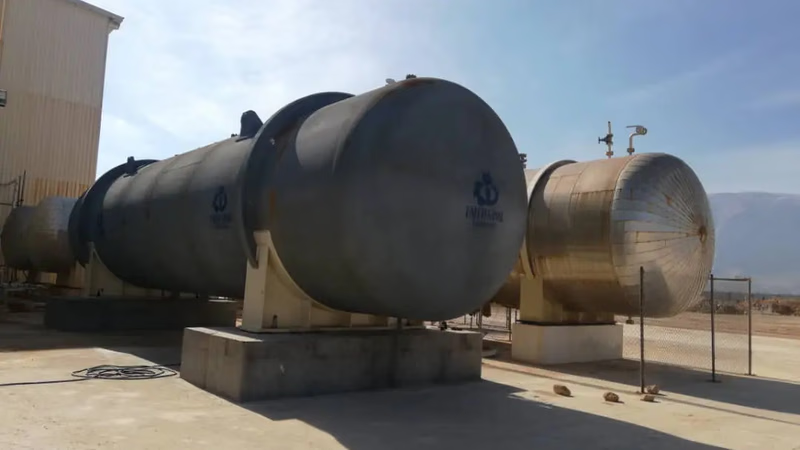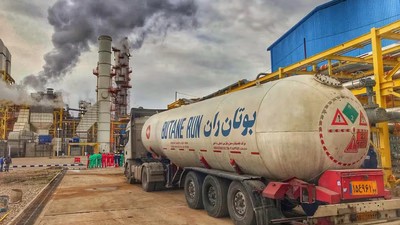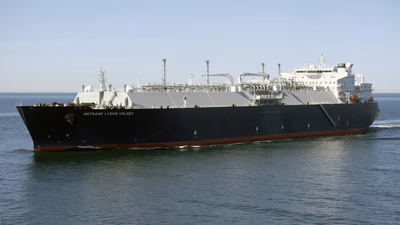
Ammonia"s role in agriculture and industrial applications. "
Ammonia is a primary component in the manufacturing of nitrogen-based fertilizers. It serves as a vital source of nitrogen, an essential nutrient for plant growth. Through the Haber-Bosch process, ammonia is converted into other forms such as ammonium nitrate and urea, which are widely used in agriculture to enhance crop yields. Ammonia is a key building block for the production of numerous industrial chemicals. It serves as a precursor in the synthesis of various compounds, including nitric acid, hydrogen cyanide, acrylonitrile, and adipic acid. These chemicals find applications in the production of plastics, fibers, pharmaceuticals, dyes, and other industrial processes.
Ammonia is widely used as a refrigerant in industrial refrigeration systems. Due to its excellent heat transfer properties, it is used in large-scale cooling applications, such as food storage warehouses, cold storage facilities, and industrial processes. Ammonia-based refrigeration systems are known for their energy efficiency and low environmental impact. Ammonia is a common ingredient in household cleaning products. It is used in glass cleaners, floor cleaners, and multipurpose cleaners due to its ability to dissolve grease, dirt, and stains effectively. However, it is important to use ammonia-based products carefully and follow safety precautions.
Ammonia-based solutions are utilized for cleaning and treating metal surfaces before painting, plating, or coating. Ammonia helps remove contaminants, oils, and oxidation from metal surfaces, ensuring better adhesion of coatings and enhancing corrosion resistance. Ammonia has gained attention as a potential fuel and energy storage medium. It can be used as a hydrogen carrier, as it contains a high concentration of hydrogen. Ammonia can be converted back into hydrogen for fuel cells or combustion, making it a potential renewable energy solution.
Ammonia is a nutrient that contains nitrogen and is suitable for plant growth. Ammonia can be converted to nitrite (NO2) and nitrate (NO3) by bacteria and then used by plants. Nitrogen is an important factor in controlling plant growth. Ammonia, like alkaline water (sodium hydroxide), is a base material. Like sodium hydroxide, it can react with oils and fats to form soap. As a detergent, ammonia converts fats and oils into soap on a glass or earthen surface, and the water in the ammonia solution dissolves the soap, so it can be removed with a sponge or paper towel. What remains is a solution of ammonium hydroxide that will completely evaporate and leave no trace on the surface.
Many factories add ammonia to tobacco, and ammonia increases the absorption of nicotine in the blood by up to seven times. As a result, it reaches the brain five seconds after the first pack of nicotine cigarettes and releases heart rate, blood pressure and blood sugar by releasing hormones. Animals' bodies make ammonia from the protein in their food because they need ammonia to neutralize uric acids. This is why it smells like ammonia from a stable where many animals are kept or from a stall.
Ammonia plays a role in water treatment processes. It is used for pH control, disinfection, and removal of contaminants. Ammonia can be added to water as ammonium hydroxide to neutralize acidity or as a source of chloramine, which acts as a disinfectant in some water treatment systems. Ammonia finds applications in pharmaceutical manufacturing and biotechnology. It is used as a pH regulator in the production of medicines and in various laboratory processes. Ammonia is also employed in the production of antibiotics, vaccines, and other pharmaceutical products. In the early twentieth century, humans were looking for a way to produce ammonia to increase fertility in their agricultural products. After the discovery of the mass production of ammonia called Haber, 2 billion people in the world were saved from starvation. In contrast, the annual production of 100 million tons of this substance has played a major role in environmental pollution.
-

Ammonia is crucial in various sectors, primarily as a nitrogen source for fertilizers, enhancing agricultural productivity through the Haber-Bosch process. It is also a key precursor in producing industrial chemicals like nitric acid and hydrogen cyanide, which are essential for manufacturing plastics and pharmaceuticals. In refrigeration, ammonia"s efficiency makes it a preferred choice for large-scale cooling systems. Additionally, it serves as an effective cleaning agent in household products and plays a significant role in metal surface treatment. Ammonia"s potential as a renewable energy source is gaining attention due to its high hydrogen content, making it suitable for fuel cells. Furthermore, ammonia is vital in water treatment processes for pH control and disinfection. Its historical significance is notable; the mass production of ammonia has significantly impacted global food security by preventing starvation for billions. However, its production also raises environmental concerns due to pollution.
-

Ammonia has been utilized since ancient times, initially recognized in various forms such as vapors from animal waste. Its distinct properties were studied during the alchemical period, where it was referred to as "spirits of hartshorn. " The isolation of ammonia as a pure compound occurred in the 18th century when Carl Wilhelm Scheele obtained a colorless gas from heating sal ammoniac. Antoine Lavoisier later named it "ammonia" in 1782. The development of the Haber-Bosch process in the early 20th century marked a significant advancement, allowing for large-scale production of ammonia from nitrogen and hydrogen gases. This innovation made ammonia essential for producing nitrogen-based fertilizers, significantly boosting agricultural yields. Ammonia"s applications extend beyond agriculture to industries such as chemicals and refrigeration. Historical uses include its role as currency in ancient Rome and its early identification by Jabir Ibn Hayyan in the 8th century.
Various production methods exist globally, with natural gas being the primary feedstock for ammonia synthesis today. "
-

West Asia, particularly countries like Saudi Arabia, Qatar, Iran, and the UAE, has emerged as a key player in ammonia production. These nations have heavily invested in infrastructure to support large-scale ammonia facilities, primarily utilizing natural gas as feedstock due to the region"s abundant reserves. The production process involves steam methane reforming, where methane is converted into hydrogen and then combined with nitrogen to create ammonia. While this industry contributes significantly to economic growth and diversification, it also raises environmental concerns due to greenhouse gas emissions associated with traditional production methods. Efforts are underway to adopt cleaner technologies such as renewable energy sources and carbon capture systems. The Middle East produces over 15 million tons of ammonia annually, with a substantial portion exported to global markets in Asia, Europe, and Africa. Saudi Arabia leads production capacity at 3. 5 million tons, followed closely by Iran and Qatar.
The integration of ammonia production with downstream industries like urea manufacturing enhances the region"s competitiveness in the fertilizer market. As global demand for chemical fertilizers rises due to population growth, West Asian countries are well-positioned to meet this need while exploring sustainable practices.
-

Ammonia (NH3) is a colorless gas composed of nitrogen and hydrogen, known for its pungent odor and high solubility in water. It is produced primarily through the Haber-Bosch process, which combines nitrogen and hydrogen under specific conditions. Ammonia has diverse applications, including use as a cleaning agent, in fertilizers, and as a precursor for various chemicals such as plastics and pharmaceuticals. Its role in agriculture is significant, providing essential nitrogen for plant growth. However, ammonia must be handled with care due to its toxic nature; inhalation can lead to respiratory issues and irritation. Environmental concerns arise from improper disposal or excessive release into water bodies, which can harm aquatic life. Ammonia also serves as a refrigerant due to its efficient heat transfer properties and is increasingly recognized as a potential alternative energy source due to its high energy density. The compound"s versatility makes it integral to multiple industries while necessitating strict safety measures during handling. "




